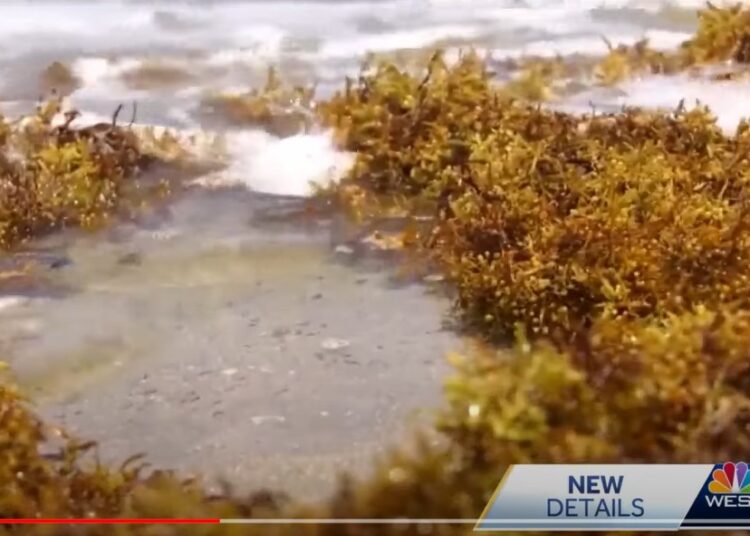There’s a monster headed for the Florida coast—and the Gulf of Mexico—and the Caribbean—and it’s going to have a huge impact on travel and tourism. Not to mention the havoc it may wreak on the economies of the locations that live off beach tourism.
It’s huge, a bloom so big it can be seen from space. “Across the Equatorial Atlantic, double the width of the United States, and several hundred kilometers north to south, at least,” explained Dr. Kevin Johnson, with Florida Tech’s marine sciences department.
The sargassum seaweed crawl towards these prime beach locations is not new, in fact it was a serious problem when Columbus and his fellow explorers crossed the Atlantic and became “becalmed” in the midst of the Sargasso Sea, where it is born.
Columbus’s ship the ‘Santa Maria’ became becalmed with her sister ships for three days, and because sailors recognised seaweed as a sign of shallow waters, they became fearful of running aground, becoming entangled in the weed and being dragged down to the ocean floor. It was a major hazard at a time when ships were propelled by the wind.

But around 2010 the annual bloom that had up to then been barely a problem, suddenly increased around the Caribbean fringes and made beaches a place you did not want to be. Not only does it become impossible to get into the water for the buildup of weed, but its sulfurous stink makes even proximity unpleasant. Not to mention the dead marine life that it has entangled and is now rotting within and beneath it. Sargassum in quantity is toxic.
To deal with the monstrous mat of seaweed that is anticipated this year, one idea that’s being floated by scientists is to sink it. But pulling the seaweed down to a point where it’s no longer buoyant raises some serious physical and economic challenges.
“The idea of having ships going out there and try and grab some of it and sink it, that’s a pretty daunting thing. I think the logistics of this are hard to wrap your brain around,” Johnson said.
And it’s more than just getting it to sink. If it does go to the depths, it could impact the fragile ecosystems in the deep sea.
“Taking a huge, many square miles mat of thick organic material produced up in the sunlight and then dropping it down to the bottom. It’s going to throw that ecosystem off a little bit,” Johnson said.
Some sargassum does sink naturally, but large amounts all at once could make an impact.
Another idea discussed is to deploy offshore booms to corral the seaweed before it can wash on shore. Booms are temporary floating barriers used to contain marine spills, protect the environment, and help with recovery. But like sinking the sargassum, there are logistical and ecological challenges.
“Probably a boom would be deployed near shore when the sargassum is getting close to the beach, so you can see where it’s going. But that’s also a bit tricky to operate vessels that near to shore and deploy the booms,” Johnson said.
But shifting currents and winds would require the boom operation to be very nimble to be in the right place at the right time to catch the sargassum.
The problem is very real, the proposed solutions enticing, but not very promising.












